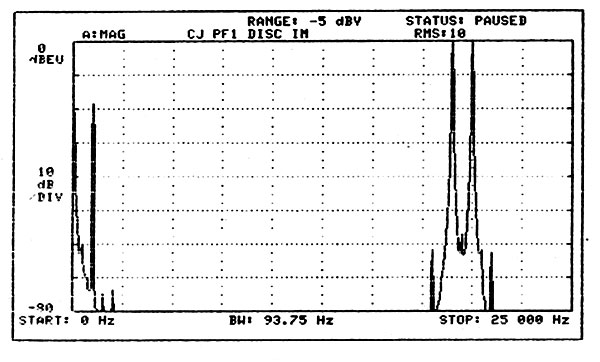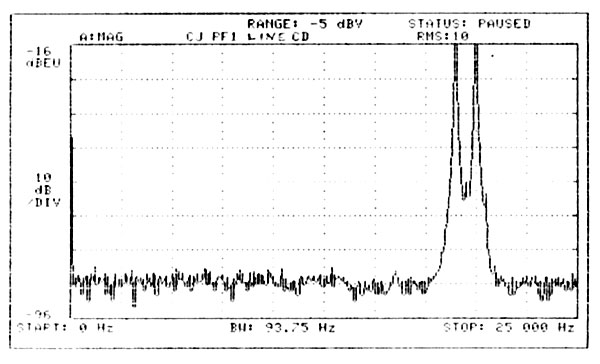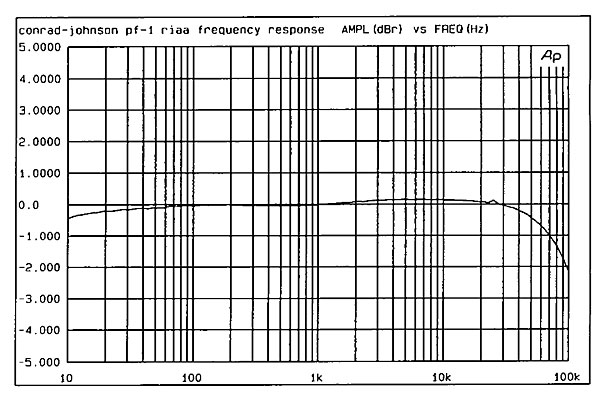| Columns Retired Columns & Blogs |
I was reading this review of the Conrad-Johnson PF-1 preamp, originally written by Martin Colloms on 12/1/90, and came upon a statement he made that evidenced an unfortunate trend that I believe continues currently and is responsible for the bastardization of analog sound in many quarters. When describing the sound of the unit's phono stage he says "There was also a hint of leanness and crispness sufficient to align analog disc sound closer to the accepted sound of CD." Back in 1990 CD sound was indeed becoming the accepted sound for musical playback, however unfortunate it is to acknowledge that. Remember the "Perfect sound forever." mantra? The tonally rich, lush sound that a good analog rig provided was replaced with the harsh brightness and unrelenting sterility and "neutrality" that digital playback brought us. The angelic soul of music, especially acoustic music, was crushed under the demonic boot of this shrill new format. I ardently maintain that the general trend toward making analog playback sound more like digital has never stopped.
I have been reading Stereophile and other audiophile mags since 1986. Back then words like sweet, lush, rich, and one that has virtually disappeared-euphonic, were the benchmarks of premium analog sound. The more a component evidenced these characteristics the better it was. These terms added-up to one thing-MUSICALITY. When digital equipment descended like the plague most of it was rejected by the audiophile mags because it lacked the above-listed traits. The cursed stuff wasn't musical. It still isn't. My fiance has a $4500 SACD player which I recently listened to. It's still very digital. No one with half an ear would ever mistake it for the beauty of analog. A used Systemdek IIx with a Rega RB300 arm and a Shure Ultra 500 cartridge will blow it out of the water and make your soul weep for joy because you've finally heard the thrilling beauty of MUSIC. Digital playback never has, and I doubt ever will, come close to even inexpensive analog.
I'm sorry this is so long. There is another overlying point here which I will address now. In the last ten years or so I've noticed different words being used as benchmarks for most analog equipment. Words like neutrality, clarity, and detail have replaced the former terms that were striven for before. I have almost never read recently in Stereophile or any other audiophile mag that a highly-rated cartridge, turntable, or phono stage was "sweet". Yet this was perhaps the most-used word to describe beautiful treble in years gone by. Especially the reproduction of violins and violas. Why? Because that's the way they sound live. I know. I've been to many classical concrts, both chamber music and symphonio. Digital makes strings sound like the screamings of a tortured cat.
The music hasn't changed. Why have the perceived goals in sound reproduction, as evidenced by the new words used as standards, changed? I contend that the pervasion of digital playback has both influenced the designers of analog equipment and the sensibilities of the reviewers of that equipment. Digital sound has bastardized analog sound. Not in every case, but as a general premise. Sound that is ruthlessly neutral and hyper-detailed is now striven for and is characteristic of much of the analog high-end gear. That's because those traits were thrust upon us by digital playback and have corrupted the tonal beauty and rich lushness that have always been hallmarks of great analog sound-and not only analog sound but the sound of vintage amplication components as well. Many audiophiles are spending a lot of money on vintage gear in order to retrieve this sound. May God bless their tenacity and wisdom. Let's bring this lovely sound to more current equipment so we can really enjoy the "Ol Black Magic". Thanks.









































